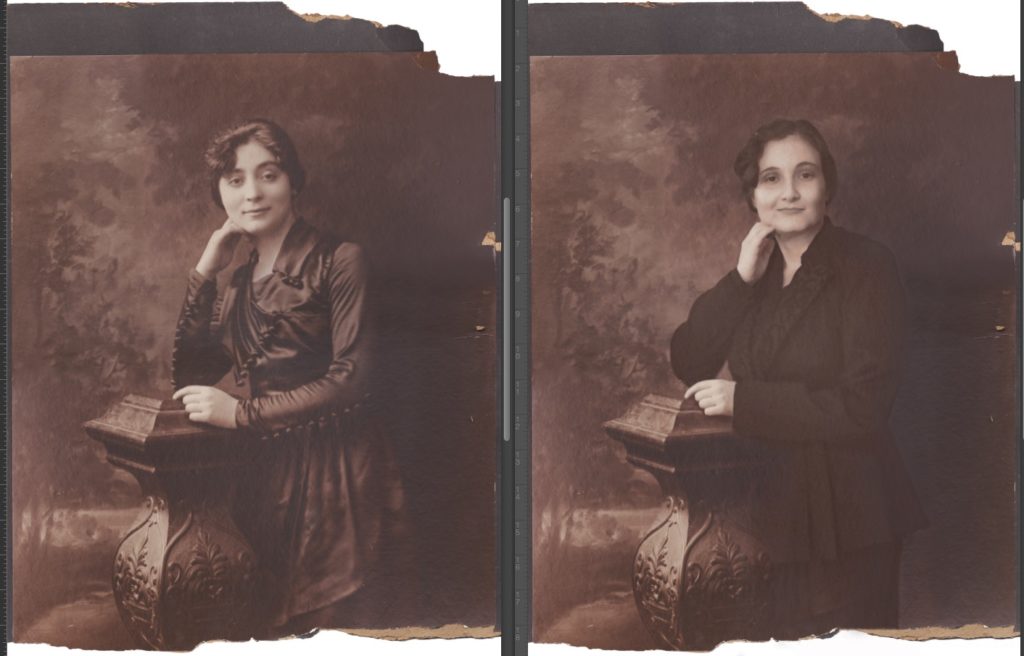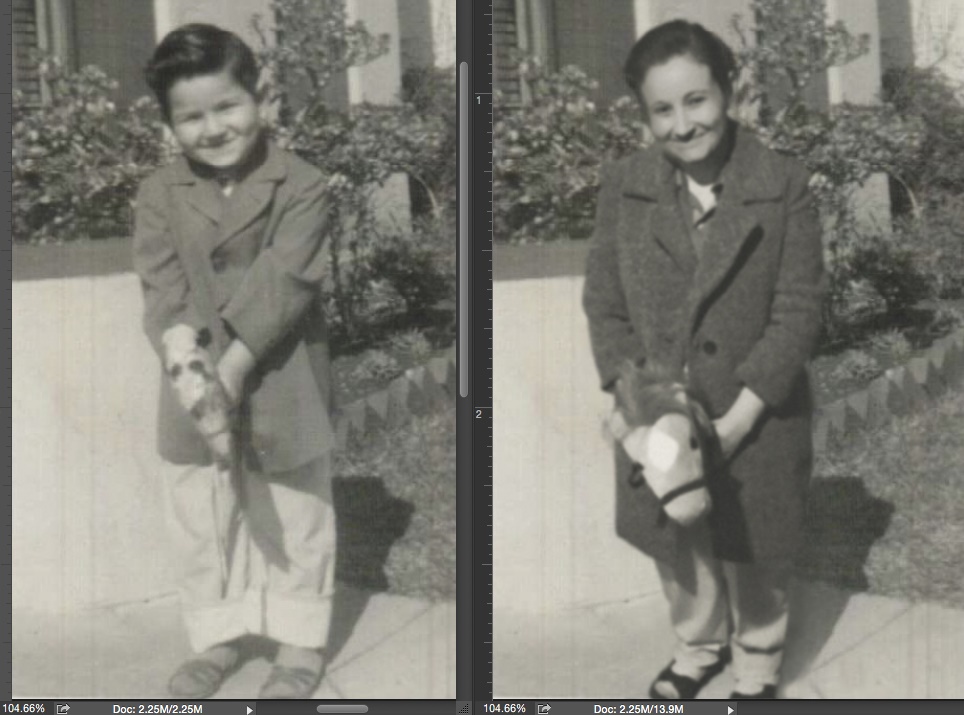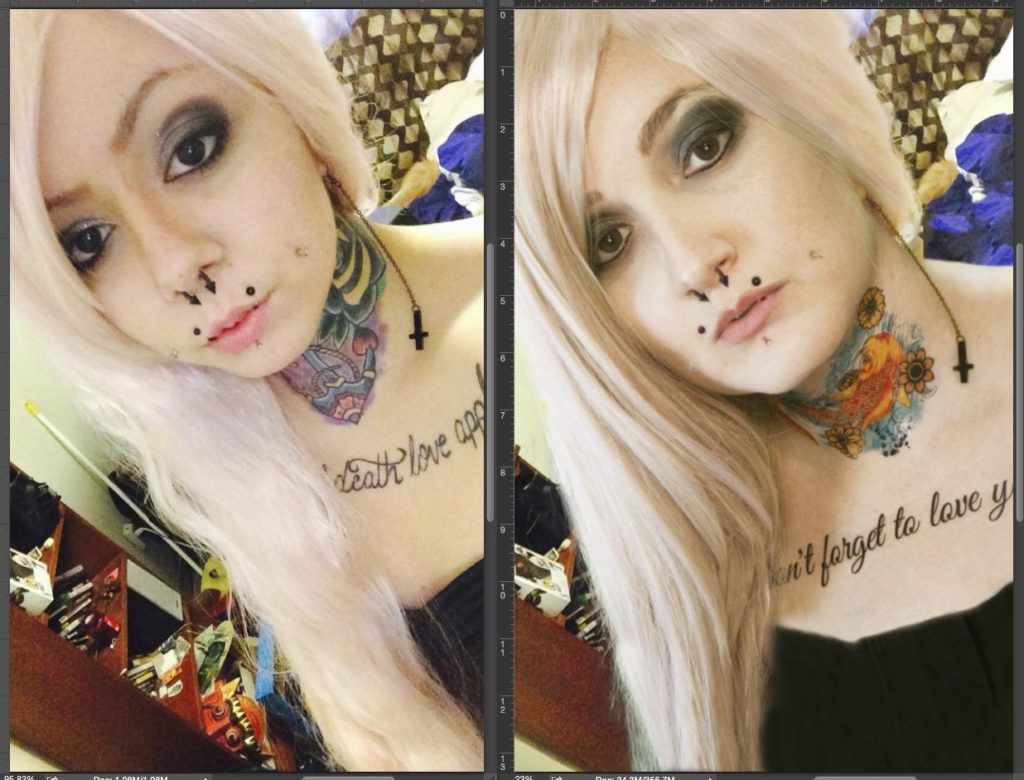If we look closely, we can see traces of our ancestors in our faces, our personalities, our genes. Our relatives, the people in their lives, and their circumstances became embedded in their bodies, shaping the way they moved and thought and lived. They then passed some of those things on to us, just as their family members did with them, and we are the outcome of centuries of this cycle.
We often see ourselves as separate, isolated, unique—and in some ways we are—but mainly we are an amalgamation of our collective pasts. There are at least three million differences between our genomes, and at the same time, our DNA is 99.9 percent alike.
We connect through our similarities. Studies have shown that when we discover the things we have in common with someone, it makes us more interested in learning the other person’s point of view and hearing their stories. And when we learn what we have in common with a relative, it can also tell us more about ourselves, our influences and possible life trajectories. With that awareness, comes the possibility of playing a more active and informed role in shaping our futures.
This is what the photo project From One, Many is about. Connecting with the past, discovering the similarities between ourselves and the people who came before us, and learning how their lives led to ours and ours to others.
My grandfather is the first person who got me thinking about these things. I found his Korean War memoir, which was based on the letters he sent to my grandmother when he was 27 and serving overseas as a medic after he had already passed away. I was 26 then and I came to identify with him in a way I never had while he was alive. The grandfather I knew was quiet, funny and caring. 1951 Sidney Goldstein was lively, observant, enthusiastic and still funny, still empathetic. It was like being handed a time machine and getting to spend time with a younger version of my grandfather, who felt a lot like a different version of myself.
I became interested in family history and storytelling, so when my aunt found a picture we’d never seen of my great-grandmother Fannie, she knew I’d want to see it. Again I was struck by the contrast between the relative I’d known and the cheeky, younger version I’d just been introduced to. There was something in her facial expression that felt immediately familiar, and I realized it was because I had seen it on my own face before. I stood in the mirror with her picture next to me to double check that I was right, and there it was—that slightly trace of a smirk teasing at the corner of both our mouths. And an idea began to form as I stood there wondering just how many other relatives I looked like, was like.
A couple friends and I ended up recreating eight photos of my relatives, and beneath each photo I wrote a brief bio and summary of the physical features and other characteristics we had in common. I wrote about it for the Huffington Post and the project went viral, showing up on sites like A Plus, Bored Panda, and Modern Met and in publications like the Jewish Journal and Dumbo Feather.
The purpose of the project was to get people thinking about the similarities and stories in their own families. I wanted others to take notice of those bits of themselves, those pieces of their identity, that could be traced to their ancestors via photos or letters or stories passed down—that is, if they thought to look for them. So often we don’t think to look for them until it’s too late and there’s no one left to tell us our history. And with the loss of those stories, comes the loss of part of ourselves.
Great-grandmother Fannie

Fannie immigrated to New York from Poland. She was married to a grocer who died at the age of 48, had three kids, and was a big worrier.
Similarities: Eyes, cheekbones, hair, and chins. I am also a champion worrier.
Cousin Ibolia

Hermina was my great-grandmother Charlotte’s sister. She stayed in Hungary when the rest of her family immigrated to the U.S. because she felt she couldn’t leave her clothing design business. According to a family tree, Hermina died of cancer in 1934 and her daughter, Ibolia, died at Auschwitz in 1944. I think the picture is from sometime in the 1930s. I posed as Ibolia, who looks about 10 in this picture.
Similarities: I’d seen this picture plenty of times, but had no idea we looked that alike until I dressed up as her. We share smiles, cheekbones, noses and hair. I wish I knew what else we had in common.
Great-great Grandfather Shmeryahu (Sidney)

In a letter, my grandfather Sidney asked his aunt Mildred what his grandfather was like. Mildred said that he used to sell lottery tickets for Irish Sweepstakes and once ran a concession stand at a bathhouse with my great-great grandmother. He was also a religious man who went to the synagogue everyday. He died in Poland at the age of 53. “He didn’t live to see one child married.” The picture was probably taken sometime between 1900 and 1910.
Similarities: The resemblance is kind of eerie. Our face shapes, eyebrows, ears and foreheads all look pretty alike. I was surprised by this one. Of all the pictures, I thought I would look the least like my great-great grandfather. I’m not sure what else we have in common. Mildred’s description didn’t give me a lot to go on.
Grandfather Sidney

My grandfather was an internist, psychiatrist, writer and voracious reader. He wrote an unpublished (though it wasn’t for lack of trying) memoir about his time in the Korean War and kept a journal. He was a quiet man with a good sense of humor who almost exclusively took care of my grandmother after she developed multiple sclerosis. This picture was taken in 1952, on my grandfather’s way home from Korea.
Similarities: I thought the family resemblance would be more obvious. We kind of have similar chins, ears and cheeks. Otherwise, we have our writing styles, love of travel, and senses of humor in common.
Cousin Thelma

My grandmother Ruthie said she and her first cousin Thelma fought a lot. Apparently they were very competitive with each other. Drama seemed to follow Thelma throughout her life. Her husband wasn’t very nice, her daughter was a handful, and she died at an early age. The picture is from the late 1940s.
Similarities: Noses, eyes, and hair. Sadly I couldn’t quite capture her saucy look. We share a mischievous streak.
Mom

Sensitive and caring, my mom Rosalie was a stay-at-home mom with a background in therapy. She loved her family, nature, animals, mystery novels, crossword puzzles and Boggle. Was a big worrier like her father (Sidney) and grandmother (Fannie). The picture is from the mid-70s.
Similarities: Way too many! Faces, height, temperaments, love of books and words, anxiety, caring nature, silliness.
Dad

My dad Steve is a runner, vegetarian, devoted family man and retired engineer. He has a good sense of humor and likes science fiction. He was 5 in this picture.
Similarities: Big cheeks, smiles, dimples, lips, ears, senses of humor, predilection for the absurd.
Cousin Tiffany

Tiffany is from a side of the family that I’m just getting to know. I haven’t actually met her in person yet because she lives in Michigan and I live in California, but we’ve talked. She’s about 10 years younger than me, enjoys anime and cosplay, and is an overall fun, open person.
Similarities: Noses, chins, cheekbones, dark senses of humor and large imaginations.
—
What do you have in common with your ancestors? What has your genealogy research taught you about yourself?
Rachael Rifkin’s work focuses on bridging the gap between generations, cultures and backgrounds by concentrating on our similarities and listening to each other’s stories. She helps people write their ethical wills and life stories, incorporates family stories into the articles and essays she writes, and once posed as eight of her relatives in order to highlight shared family traits and stories. The photo project went viral and was featured on Buzzfeed, Bored Panda and the Jewish Journal.


No comments yet.